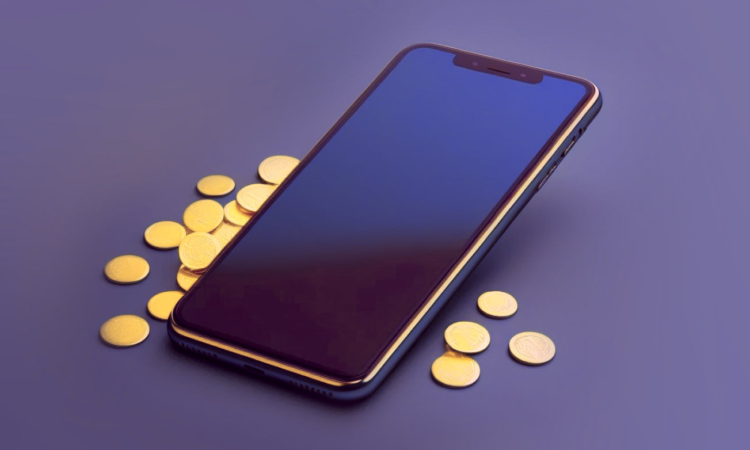
Start your business
Build your brand
Create your website
Online store editor
Customize your store
Store themes
Find business apps
Shopify app store
Own your site domain
Domains & hosting
Explore free business tools
Tools to run your business
Sell your products
Sell online or in person
Sell online
Grow your business online
Sell across channels
Reach millions of shoppers and boost sales
Sell in person
Point of Sale (POS)
Sell globally
International sales
Sell wholesale & direct
Business-to-business (B2B)
Market your business
Reach & retain customers
Market across social
Social media integrations
Chat with customers
Shopify Inbox
Nurture customers
Shopify Email
Know your audience
Gain customer insights
Manage your business
Track sales, orders & analytics
Measure your performance
Analytics and Reporting
Manage your stock & orders
Inventory & order management
Automate your business
Shopify Flow
Shopify Developers
Build with Shopify's powerful APIs
Plus
A commerce solution for growing digital brands
All Products
Explore all Shopify products & features
Help and support
Get 24/7 support
How-to guides
Read in-depth business guides
Business courses
Learn from proven experts
Shopify blog
Business strategy tips
What is Shopify?
How our commerce platform works
Founder stories
Learn from successful merchants
Branding
Build your brand from scratch
Marketing
Build a marketing plan
Ecommerce SEO
Improve your search ranking
Social media strategy
Turn social into sales
Business growth
Scale your business
Business name generator
Logo maker
Stock photography
Business plan template
Link in bio tool
QR code generator
Changelog
Your source for recent updates
Newsroom
All company news and press releases
Start selling with Shopify today
Start your free trial with Shopify today—then use these resources to guide you through every step of the process.
Learn about the ways content creators can make money online and some examples of successful content creators.
Start your online business today.
For free.
Creating content online isn’t just a hobby, it’s also a viable new model for making a living. Technology has made creating photo and video content easy and affordable for anyone with a smartphone. Now, the online world is filled with people who’ve built a following by speaking directly to viewers about their favorite topic, no matter how niche. Once that content is public, there are numerous ways creators can leverage their following to generate income. Here’s what a content creator’s business model could look like, with a few successful examples.
Content creators are individuals, typically independent of any media company, who create videos, podcasts, social media posts, or other digital content for public consumption. Successful content creators build an audience of followers and earn money with their content.
Content creation has been around in various forms for centuries—any artist, writer, or filmmaker who has ever made something has technically created content. Yet the term “content creator” specifically refers to independent creators who make and distribute content through social media or other self-publishing platforms.
The creator economy refers to all of the businesses and services that cater to the content creation industry and help them get paid. This new economy includes digital platforms such as Substack, YouTube, TikTok, and Instagram that help creators reach a wider audience. It also includes other digital products, like photo editing app VSCO, which makes it easy to alter visual content on your phone, or places like Shopify and Patreon, both of which help creators access new revenue streams.
Other businesses supporting content creators include talent agencies that help influencers and creators find media opportunities, and software services, such as Hootsuite or Sprout, which streamline content management.
Shopify Collabs: Get paid by brands you love
Discover the millions of brands on Shopify, share your favorite products, and earn when your followers buy.
Learn more
Content creators need to think of their followers as potential customers and develop a business plan in order to start generating revenue. Creators can stick to one channel, or expand into other platforms to create multiple revenue streams. For example, a graphic designer might make money by charging a subscription fee for their design newsletter, or by selling novelty t-shirts on their website. Here are seven other ways content creators can make money:
Platforms like Substack and Patreon allow content creators to charge their readers and followers monthly subscription fees. Some platforms offer subscription tiers, which creators can use to offer exclusive content to followers who are willing to pay more.
Content creators will often partner with companies for brand sponsorships if both parties share a target audience. They may become a brand ambassador for the company and tout its products over a period of time in exchange for pay. Or they may post sponsored content, which is a type of promotional post endorsing the company’s products in one or a series of posts.
The terms “ad” and “sponsored content” are sometimes used interchangeably, but represent different monetization strategies. Sponsored content refers to original content created by an individual in partnership with a brand. The creator is paid to feature the brand’s product or service. Ads are messages designed by a brand’s marketing team. Advertisements like banner ads and display ads can appear on websites or blogs. On social media platforms, creators can allow brands to boost content they created and run it as an advertisement in user feeds or Instagram stories.
In addition to leveraging their own channels to make money, creators can sell services like online courses or events. These are often related to the creator’s areas of expertise—a food writer could create a walking tour of local pizza restaurants, for example, while a tech industry thought leader might lead a course on fundraising. Creators can use different platforms, such as Eventbrite, to create and charge for events.
Content creators can design and sell their own merchandise on their websites using a product like Shopify. High-profile macro-influencers, those who have the biggest followings on social media, may also consider developing product lines related to their area of expertise. For example, YouTuber Liah Yoo launched the skin care brand KraveBeauty following her success as a beauty vlogger.
People often turn to content creators that they trust to hear how they like certain products or services. As such, creators could use affiliate marketing links when they list or describe a product. These links track and attribute sales to a specific referral source, so that if a creator’s followers click a link from the creator’s channel and buy something, that creator makes money.
Platforms like YouTube offer a revenue share to content creators with large followings. YouTube earns money by running ads before and during video content. Eligible creators can apply to the YouTube Partner Program to receive a portion of the ad revenue generated by their video content. Channels with larger followings receive a more favorable split.
These are some content creators who have successfully leveraged their followings to earn income:
Ana Coto. Ana Coto (@anaocto) has 2.1 million TikTok followers who watch videos of her roller skating. Coto has partnered with major brands, including Lays and Candy Crush, to post sponsored content to her Instagram feed. She also works with a talent agency to coordinate media opportunities.
Content creators are not always influencers, even though there is overlap between the two. An influencer’s primary product is their own personal brand, where content creators may or may not choose to market themselves as part of their content strategy. For example, the hosts of a successful gardening podcast may create content about indigenous plants and exotic trees, but not feature themselves prominently. They would be content creators, not influencers.
It takes dedication and a clear brand voice to establish a social media presence and build a following. You may need to create content for several years before you attract potential clients and start making money from it. Even when you do, there are no guarantees you’ll earn a steady income.
A content creator kit refers to all of the tools required to make your content. For video creators, this often includes a tripod with a smartphone attachment, a ring light, and an app for editing. For content writers or social media creators, it might include a computer and social media management tool that can schedule posts.
No, you don’t need a specific degree, a sophisticated marketing strategy, or expensive software to create high-quality content. Anyone with a compelling idea can start creating content—no formal qualifications required. Depending on the type of content you’d like to create, you may not need much more than a smartphone and a computer.
At the highest level, a select group of premiere content creators can earn six figures on platforms like TikTok, Twitch, and YouTube—but most content creators earn significantly less. It takes a following of at least several thousand to earn significant income.
Keep up with the latest from Shopify
Get free ecommerce tips, inspiration, and resources delivered directly to your inbox.
By entering your email, you agree to receive marketing emails from Shopify.
popular posts
The point of sale for every sale.
popular posts
2023-11-08
2023-09-01
2023-12-05
2023-11-09
2023-09-20
2023-11-23
2023-12-02
2023-11-06
Subscribe to our blog and get free ecommerce tips, inspiration, and resources delivered directly to your inbox.
Unsubscribe anytime. By entering your email, you agree to receive marketing emails from Shopify.
18 Apr 2024
18 Apr 2024
17 Apr 2024
17 Apr 2024
16 Apr 2024
14 Apr 2024
12 Apr 2024
12 Apr 2024
Learn on the go. Try Shopify for free, and explore all the tools you need to start, run, and grow your business.
Try Shopify for free, no credit card required.






